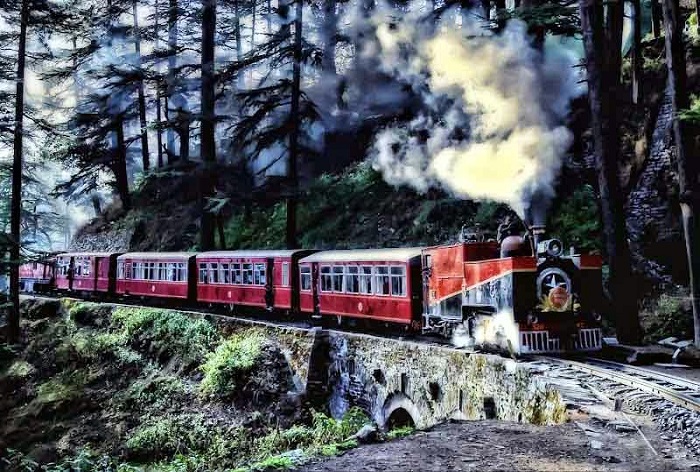
India’s railway network is one of the most extensive in the world, playing a vital role in connecting cities, towns, and remote regions. Among the various track gauges used in India, narrow gauge railways hold a special place due to their historical significance, unique engineering, and scenic routes. Narrow gauge railways in India have served as lifelines for many remote areas, helping in economic growth and cultural connectivity. Though many of these lines are being converted to broad gauge under the Indian Railways’ modernization plan, the narrow gauge legacy still remains an important chapter in India’s railway history.
This article explores the history, significance, major routes, challenges, and the future of narrow gauge railways in India.
History of Narrow Gauge Railways in India
The introduction of narrow gauge railways in India dates back to the late 19th century. During British colonial rule, narrow gauge lines were constructed to provide cost-effective rail connectivity in hilly and remote areas. The primary reason for choosing narrow gauge over broad gauge was its cost-effectiveness and ease of construction in difficult terrains.
Some of the earliest narrow gauge railway projects in India include:
- Darjeeling Himalayan Railway (1881) – India’s first narrow gauge railway, built to connect the town of Darjeeling with the plains.
- Gwalior Light Railway (1899) – Developed to link Gwalior with nearby rural areas.
- Matheran Hill Railway (1907) – A scenic mountain railway to connect Matheran with Neral.
Significance of Narrow Gauge Railways
Narrow gauge railways have played a significant role in India’s transport system for over a century. Their significance can be categorized into the following aspects:
1. Connectivity to Remote Areas
Narrow gauge railways provided access to regions where broad gauge or meter gauge lines were economically or technically infeasible. Many tribal, hilly, and rural communities relied on these lines for trade and mobility.
2. Economic Growth
Small towns and villages flourished due to railway connectivity. These lines helped transport agricultural produce, timber, minerals, and industrial goods, contributing to local economies.
3. Tourism and Heritage Value
Several narrow gauge railways are now popular tourist attractions. The scenic routes and vintage locomotives attract railway enthusiasts and travelers.
4. Engineering Marvels
Many narrow gauge lines pass through steep gradients, sharp curves, and breathtaking landscapes, showcasing remarkable engineering feats of their time.
Major Narrow Gauge Railways in India
1. Darjeeling Himalayan Railway (DHR)
- Gauge: 2 feet (610 mm)
- Route: New Jalpaiguri – Darjeeling
- Heritage Status: UNESCO World Heritage Site (1999)
- Highlights: The “Toy Train” journey through the hills of West Bengal, with the famous Batasia Loop and Ghum station (India’s highest railway station).
2. Kalka-Shimla Railway
- Gauge: 2 feet 6 inches (762 mm)
- Route: Kalka – Shimla
- Heritage Status: UNESCO World Heritage Site (2008)
- Highlights: The “Kalka Shimla Toy Train” journey through the hills of Himachal Pradesh with breathtaking 102 tunnels, 864 bridges, and breathtaking views of the Himalayas.
3. Matheran Hill Railway
- Gauge: 2 feet (610 mm)
- Route: Neral – Matheran
- Heritage Status: Proposed for UNESCO listing
- Highlights: A scenic and eco-friendly journey to the hill station of Matheran.
4. Nilgiri Mountain Railway
- Gauge: 1 meter (1000 mm) initially, later reduced to 2 feet 6 inches (762 mm)
- Route: Mettupalayam – Ooty
- Heritage Status: UNESCO World Heritage Site (2005)
- Highlights: India’s only rack-and-pinion railway, offering stunning views of the Nilgiri hills.
5. Gwalior Light Railway
- Gauge: 2 feet (610 mm)
- Route: Gwalior – Sheopur Kalan
- Significance: Built by the Scindia rulers, served as a vital link for central India.
Challenges Faced by Narrow Gauge Railways
Despite their historical and cultural significance, narrow gauge railways in India have faced multiple challenges:
1. Conversion to Broad Gauge
Indian Railways has been progressively converting narrow gauge lines to broad gauge under the “Project Unigauge” initiative to standardize operations and improve efficiency. While this improves connectivity, it leads to the loss of heritage narrow gauge routes.
2. High Maintenance Costs
Maintaining narrow gauge tracks and rolling stock is expensive due to their specialized nature. Spare parts and skilled workers are also scarce.
3. Low Speeds and Capacity Constraints
Narrow gauge trains have lower speeds and capacity compared to broad gauge, making them less viable for modern transportation needs.
4. Environmental and Operational Challenges
Hilly and forested terrains present challenges like landslides, track wear, and seasonal disruptions.
The Future of Narrow Gauge Railways in India
With modernization efforts, many narrow gauge lines have already been converted to broad gauge. However, some lines have been preserved for tourism and heritage purposes.
1. Preserving Heritage Lines
The government and railway authorities are making efforts to retain certain scenic and historically significant narrow gauge lines for heritage tourism. The Darjeeling Himalayan Railway, Kalka-Shimla Railway, and Nilgiri Mountain Railway continue to be operational as UNESCO World Heritage Sites.
2. Potential for Eco-Tourism
Narrow gauge railways, especially in hilly regions, have the potential to be developed as eco-tourism attractions. Upgrading facilities while maintaining historical authenticity can boost local tourism.
3. Technological Innovations
Hybrid locomotives and solar-powered narrow gauge trains could help in reducing operational costs and improving sustainability.
4. Museum and Cultural Integration
Railway heritage museums can showcase narrow gauge railways, preserving their legacy for future generations.
Conclusion
Narrow gauge railways in India have played a crucial role in shaping the country’s transportation history. While many have been phased out in favor of broad gauge, some remain as cherished heritage lines, attracting tourists and railway enthusiasts. Their scenic routes, historical importance, and engineering marvels continue to inspire admiration. As India modernizes its railway network, preserving select narrow gauge railways for cultural and tourism purposes will ensure that this remarkable legacy lives on for future generations.
For More Articles Click




Leave a Reply